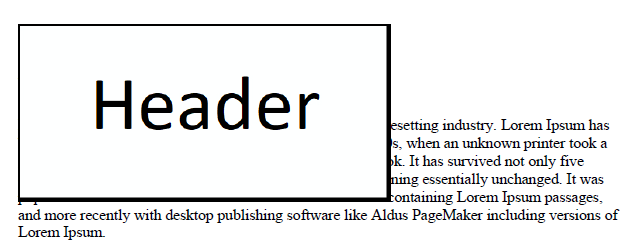The SVG element allows drawing paths, boxes, circles, text, and graphic images in HTML document.
Here is a sample:
<div style="border: 1px solid #ccc; border-radius: 5px; padding: 10px; margin: 10px; background-color: #f9f9f9;">
<table>
<tr>
<td>
<svg viewBox="0 0 100 100" xmlns="http://www.w3.org/2000/svg" style="width:70px">
<path d="M20 35 L50 20 L80 35 L80 75 L50 90 L20 75 Z" fill="#1581A0"></path>
<path d="M50 20 L80 35 L80 75 L50 90 L50 20" fill="#1E3D6B" opacity="0.3"></path>
<path d="M35 40 L65 40 L65 70 L35 70 Z" fill="white" opacity="0.9"></path>
<path d="M35 50 L65 50" stroke="white" stroke-width="2" opacity="0.6"></path>
<path d="M35 60 L65 60" stroke="white" stroke-width="2" opacity="0.6"></path>
<path d="M45 40 L45 70" stroke="white" stroke-width="2" opacity="0.6"></path>
<path d="M55 40 L55 70" stroke="white" stroke-width="2" opacity="0.6"></path>
<path d="M20 35 L50 20 L80 35" fill="none" stroke="white" stroke-width="1.5" opacity="0.2"></path>
</svg>
</td>
<td>
<h1 style="padding-top: 9px;">Property Comparables Ltd</h1>
</td>
</tr>
</table>
</div>The expected result should look in a similar way in the browser:
margin-top margin-right margin-bottom margin-left
Background properties do not inherit, but the parent element's background will shine through by default because of the initial 'transparent' value on 'background-color'.
HTML content:
<div style="background-color: gray; color: red">
Text outside the list
<ul>
<li>
Text in the list
</li>
</ul>
</div>The result when exported to DOCX/PDF:
Workaround: set the style directly to the <ul> element:
<div style="background-color: gray; color: red">
Text outside the list
<ul style="background-color: gray;">
<li>
Text in the list
</li>
</ul>
</div>
You can add captions to figures, equations, or other objects.
From the Office Open XML File Formats Specification: This element specifies the contents and positioning for captions which can be used to automatically label objects in a WordprocessingML document. A caption is a string that labels an object included in a WordprocessingML document, and typically consists of a string plus a field which numbers this item within a collection of similar objects.
Similar functionality can be achieved using the CustomCodeField:
RadFlowDocumentEditor editor = new RadFlowDocumentEditor(document);
using (Stream stream = File.OpenRead("Image1.jpg"))
{
ImageInline image = editor.InsertImageInline(stream, "jpg");
editor.InsertBookmark("Image", image, image);
}
editor.InsertBreak(BreakType.LineBreak);
editor.InsertText("Figure ");
editor.InsertField("SEQ Image", "Update Figure Number");
When exporting a document containing a FloatingImage in the header/footer the measurement of the header/footer height doesn't take into account the height of this image.
This leads to overlapping the page content with the image.
Workaround: Increase the Header (or Footer) top page margin by the height of the image:
foreach (Section section in this.document.Sections)
{
double floatingImageHeight = 0;
foreach (BlockBase block in section.Headers.Default.Blocks)
{
if (block is Paragraph paragraph)
{
FloatingImage floatingImage = (FloatingImage)paragraph.Inlines.FirstOrDefault(i => i is FloatingImage);
floatingImageHeight = floatingImage.Image.Height;
}
}
double left = section.PageMargins.Left;
double top = section.PageMargins.Top + floatingImageHeight;
double right = section.PageMargins.Right;
double bottom = section.PageMargins.Bottom;
section.PageMargins = new Telerik.Windows.Documents.Primitives.Padding(left, top, right, bottom);
}
When the table is nested in another table with fixed-width and the nested one has more than one cell in the row, where the one has a preferred width set to auto and the other has content that split on more than one row, then the first cell is exported with a wrong width.
Table with specified width in inches is not correctly exported when the size is set in inches (this is done in the imported HTML)
Workaround: set the table size in the code and remove the style.
foreach (Table table in document2.EnumerateChildrenOfType<Table>()){
table.LayoutType = TableLayoutType.FixedWidth;
table.PreferredWidth = new TableWidthUnit(TableWidthUnitType.Fixed, 950);
}
The Hyperlink field is wrongly exported when the Code fragment is divided into several text fragments.
Actual:
Expected:
Workaround: Iterate the document content after importing it into RadFlowDocument in order to modify the Code fragment:
bool isBetweenStartAndSeparation = false;
string fieldInfoText = string.Empty;
int startIndex = 0;
IEnumerable<Paragraph> paragraphs = document.EnumerateChildrenOfType<Paragraph>();
foreach (Paragraph paragraph in paragraphs)
{
foreach (InlineBase inline in paragraph.Inlines.ToList())
{
if (inline is FieldCharacter)
{
FieldCharacter fieldCharacter = inline as FieldCharacter;
if (fieldCharacter.FieldCharacterType == FieldCharacterType.Separator)
{
isBetweenStartAndSeparation = false;
Run run = new Run(this.document)
{
Text = fieldInfoText
};
paragraph.Inlines.Insert(startIndex, run);
}
else if (fieldCharacter.FieldCharacterType == FieldCharacterType.Start)
{
isBetweenStartAndSeparation = true;
startIndex = paragraph.Inlines.IndexOf(inline) + 1;
fieldInfoText = fieldCharacter.FieldInfo.GetCode().Trim().ToLowerInvariant();
}
}
else if (isBetweenStartAndSeparation)
{
paragraph.Inlines.Remove(inline);
}
}
}
The Nonbreaking space is exported as a Unicode character instead of the appropriate Control word.
Actual: "\n160?"
Expected: "\~"
An incorrect file is produced when merging a stream more than 40 times.
Workaround: A possible workaround could be to merge up to 40 times in one file, then continue merging in a new one, and finally merge the newly generated documents.
According to the RTF specification: The valid values for the "\ls" index are from 1 to 2000.
They are currently exported from zero or "\ls0".





